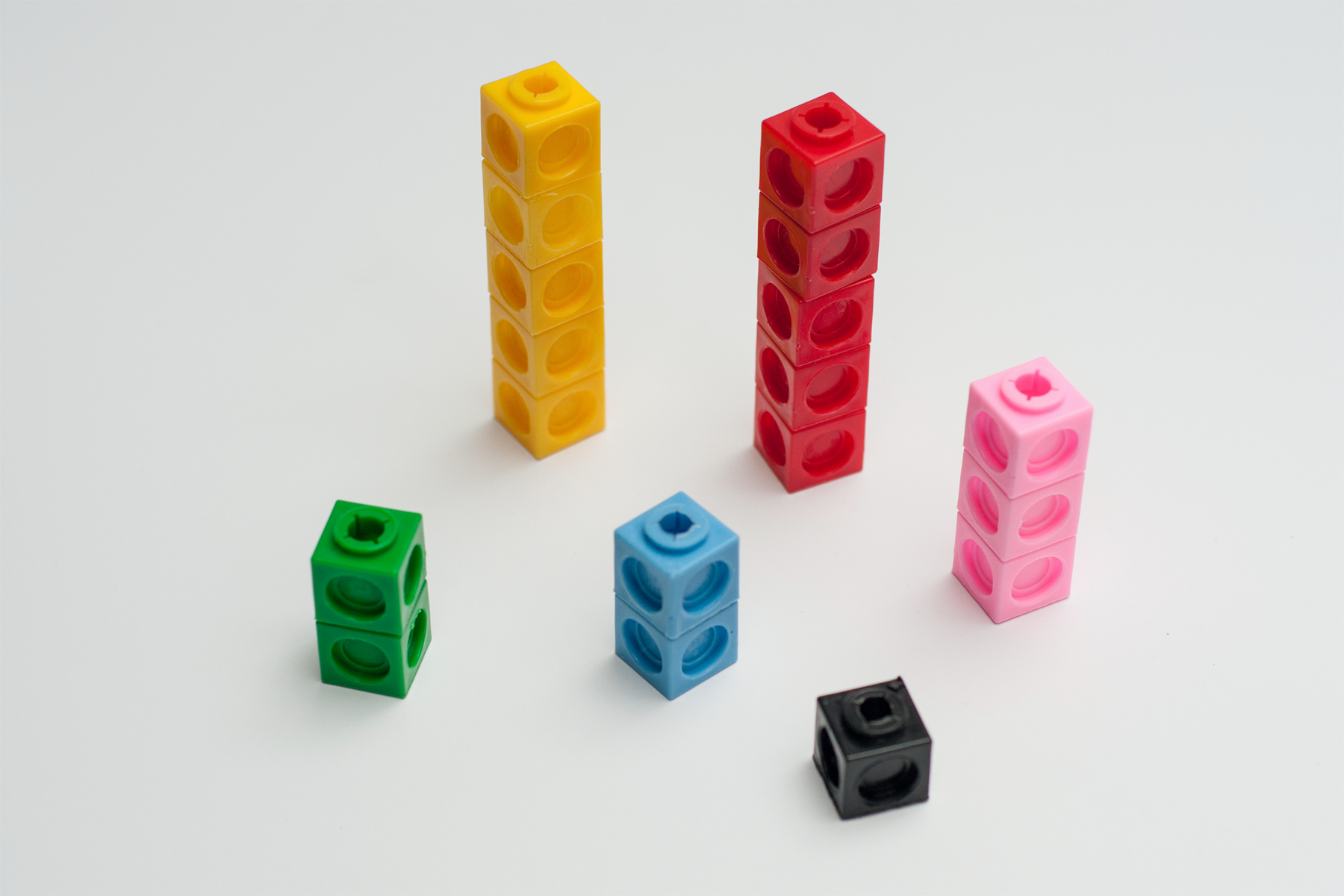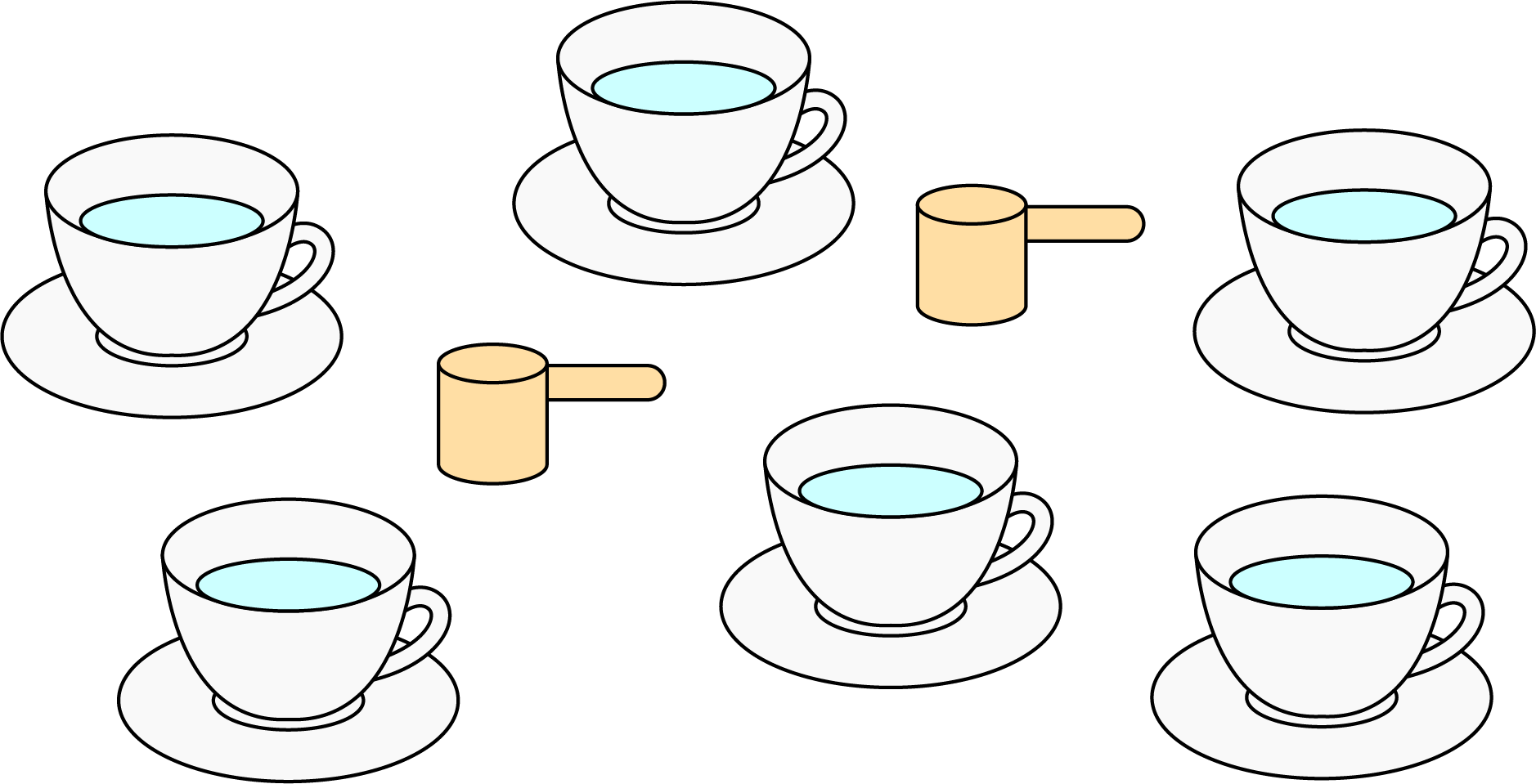2.1: Number Talk: Dividing by 4 and Multiplying by \frac14
Find the value of each expression mentally.
24\div 4
\frac14\boldcdot 24
24\boldcdot \frac14
5\div 4
Let’s use diagrams to represent ratios.
Find the value of each expression mentally.
24\div 4
\frac14\boldcdot 24
24\boldcdot \frac14
5\div 4
Here is a collection of snap cubes.

1. Choose two of the colors in the image, and draw a diagram showing the number of snap cubes for these two colors.
Return your partner’s paper. Read the sentence written on your paper. If you disagree, explain your thinking.
Elena mixed 2 cups of white paint with 6 tablespoons of blue paint.
Here is a diagram that represents this situation.

Discuss the statements that follow, and circle all those that correctly describe this situation. Make sure that both you and your partner agree with each circled answer.
Jada mixed 8 cups of flour with 2 pints of water to make paste for an art project.
Take turns with your partner to match a sentence with a diagram.
There were two diagrams that each matched with two different sentences. Which were they?
Ratios can be represented using diagrams. The diagrams do not need to include realistic details. For example, a recipe for lemonade says, “Mix 2 scoops of lemonade powder with 6 cups of water.”
Instead of this:

We can draw something like this:

This diagram shows that the ratio of cups of water to scoops of lemonade powder is 6 to 2. We can also see that for every scoop of lemonade powder, there are 3 cups of water.